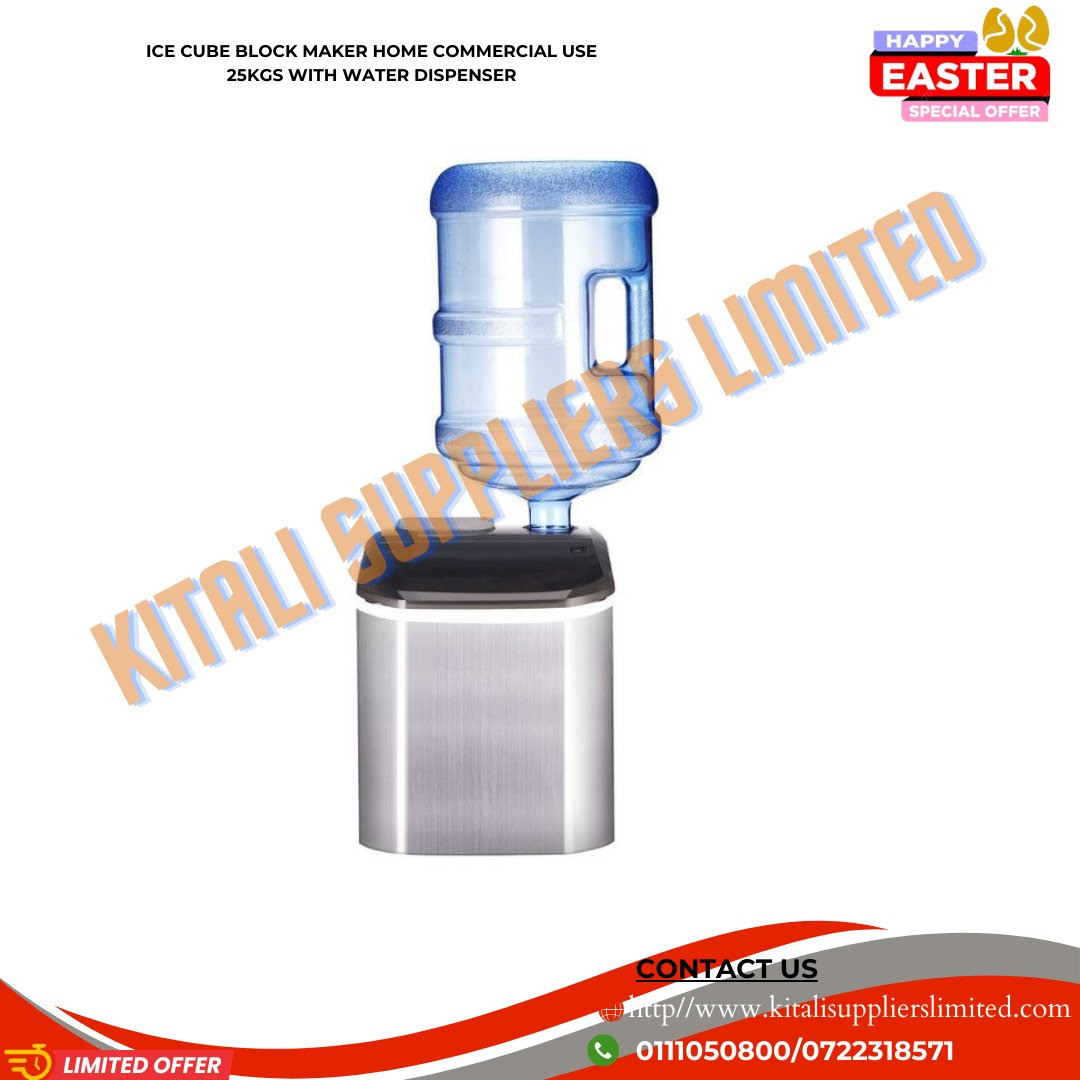Description
Ice Cube Block Maker Home Commercial Use 25kgs With Water Dispenser by Kitali Suppliers LimitedAn ice cube maker, also known as an ice maker or ice machine, is a device used to produce ice cubes. It is commonly seen in homes, restaurants, bars, and other commercial establishments where a consistent supply of ice is required.Here are the full details about an ice cube maker:1. Functions: The primary function of an ice cube maker is to freeze water into ice cubes. It automates the process of freezing water, eliminating the need for manual filling of ice trays and waiting for them to freeze.2. Operation: The ice cube maker typically consists of a refrigeration system, a water supply system, and a mold or bin for ice cube storage. The process generally involves the following steps: a. Water supply: The ice maker is connected to a water source, either through a water line or by manually filling a water reservoir. b. Freezing: The water is directed into a freezing compartment where it comes into contact with a cooling element, usually a refrigeration coil or plate. The cooling element extracts heat from the water, causing it to freeze. c. Harvesting: Once the ice cubes have formed and reached the desired size, a mechanism is activated to separate or release them from the freezing surface. This can be done by heating the surface or physically manipulating it. d. Storage: The detached ice cubes fall into a storage bin or container, ready to be accessed whenever needed.3. Ice cube shapes and sizes: Ice cube makers can produce ice cubes in various shapes and sizes to cater to different preferences and requirements. Common shapes include cubes (square or rectangular), bullet shapes, crescents, and nuggets. The sizes can range from small (e.g. , 0.5 inches) to large (e.g. , 2 inches) cubes.4. Production capacity: Ice cube makers have different production capacities, ranging from a few dozen to several hundred pounds of ice per day. The capacity of a specific ice maker depends on factors such as the model, size, and intended use. Higher-capacity models are typically found in commercial settings.5. Control features: Ice cube makers often come with control features to customize ice production. These may include options to adjust ice cube size, control ice thickness, regulate production cycles, and monitor ice levels in the storage bin. Some models may also offer additional functions like crushed ice or water dispensing.6. Cleaning and maintenance: Regular cleaning and maintenance are essential to ensure proper functioning and hygiene of the ice cube maker. This may involve periodically cleaning the water lines, filters, and storage bin, as well as descaling the freezing surface to remove mineral deposits.7. Power source and installation: Ice cube makers can be powered by electricity, usually requiring a standard electrical outlet. Installation may involve connecting the water supply line and ensuring proper drainage for melted ice. Some portable models may not require a water line and can be manually filled.It's worth noting that features and specifications may vary depending on the specific make and model of the ice cube maker. Therefore, it's advisable to refer to the manufacturer's instructions and guidelines for the particular ice maker in use.




